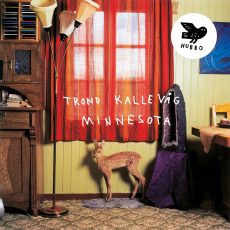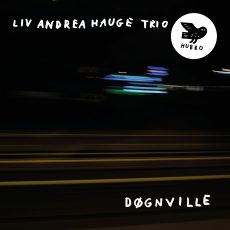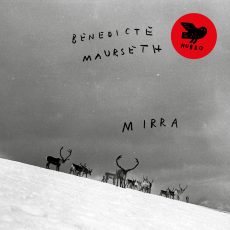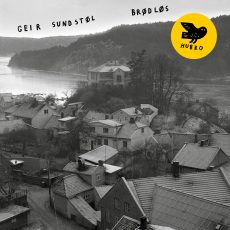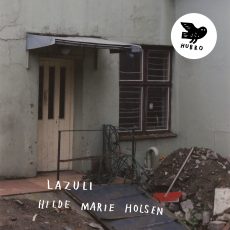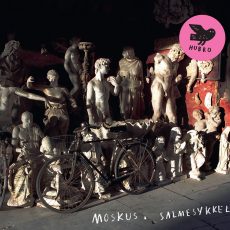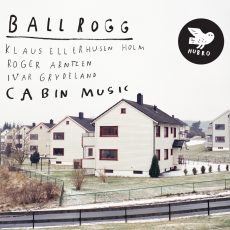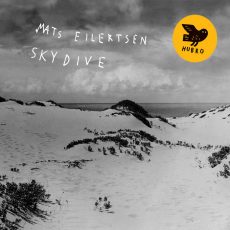“Fengselsfugl” is the long-awaited follow-up to his critically acclaimed album and Hubro debut “Bedehus & Hawaii” (Prayer house and Hawaii) from 2019 which was inspired by his deeply religious grandparents and their strange prayer house music that according to Trond sounded a bit like Hawaiian guitar-music or slack key. Both albums follow an artistic concept that is based upon his encounters with environments that stand next to the established. “Bedehus & Hawaii” was highlighted as one of the 15 best jazz albums in 2019 by Bandcamp – one of the world’s largest websites for selling music: “Kallevåg has created one of the most gorgeous recordings to hit the shelves in 2019!”…”The contemplative release from Trond Kallevåg is a deep dive into serenity, where melodic improvisations melt into indistinguishable shapes and take on the logic of dreams.” He has also by numerous reviewers been compared to guitarists like Ry Cooder and Bill Frisell. “Bedehus & Hawaii” locates Trond Kallevag Hansen at the right height on the heels of Ry Cooder and Bill Frisell.” – Jazzaroundmag.
Trond is originally from the small rain-filled west coast town of Haugesund which he thinks has inspired his distinct lyrical sound. “For me personally, I think my music is very much inspried by my home town. I think it has something to do with the rain, the coastal landskape and the people living there, which conveys a kind of somber mood. My music also has that somberness, I prefer the sound, melodies and form over individual virtuosity.»
As with the previous record, Trond composed the music and mixed the record himself, which is a big part of his creative work. The recording was also this time recorded in three days in Studio Intim which is owned by the legendary Norwegian guitar player, and fellow Hubro-artist, Geir Sundstøl. On both albums Geir has contributed with his sublime steel guitar playing that perfectly matches Kallevåg’s obvious affection for atmospheric film music and broadside ballads. In the sextet you also find one of Scandinavia’s foremost keyboardist David Wallumrød who tastefully complements the lyrical songs.
Trond tries to convey something personal through his music. While composing “Fengselsfugl” Trond wanted to draw inspiration from his many years of work with inmates inside Oslo Prison.
“There is a strange and interesting mood inside Oslo Prison. Getting inside the prison walls is like entering an unfamiliar world yet only separated by a dozen inch thick concrete wall. The inmates told me stories and gave me insight into their innermost feelings. Feelings that we all share as human beings. But of course, a few times also nasty and bad stuff.”
«Inside Oslo Prison I composed a lot of the music for the record. As on my previous album, “Bedehus & Hawaii”, I wanted to portray self-experienced moods in my encounter with societies next to the “normal” and established. There are also several musical similarities between the prayer house music and the old prison songs, which makes “Fengselsfugl” a natural sequel to “Bedehus & Hawaii.”
He examined the prison songs or broadside ballads written by some famous Norwegian prison birds from the 1800-s who were national celebrities in their time. A broadside (also known as a broadsheet) is a single sheet of inexpensive paper printed on one side, often with a ballad, rhyme, news and sometimes with woodcut illustrations. They were one of the most common forms of printed material between the sixteenth and nineteenth centuries, particularly in Britain, Ireland and North America. They were also popular in Norway. They were often about famous people, stories and legends and often served as the social media of the time and often “Fake News”. The famous prison birds of Norway served the entire Norwegian people with self-composed ballads, they created myths about their heroic and exciting lives. Many of the titles on the record are the same as some of the prison broadside ballads.
Trond uses his guitar as a tool for conveying his musical ideas that often has a strong melodic foundation and storytelling quality to them but still open enough for his fellow musicians to express themselves effortlessly. Everything seems to fall quite naturally into place, sounding intimately poised and at home with itself. “I wanted the musicians to express themselves without feeling limited by the music, but I also wanted to tell stories and have a cinematic quality”, he says.
The music draws in expressions from folk music, American folk / blues where one can mention Ry Cooder and the eccentric composer and folk musician Kenneth Sivertsen from his home town. Hawaiian Slack Key tradition inspired by Joseph Spence and Ray Kane. In addition to classical music and modern improvisation, in combination with electroacoustic musical directions inspired by Arne Nordheim and Helge Sten, among others.










